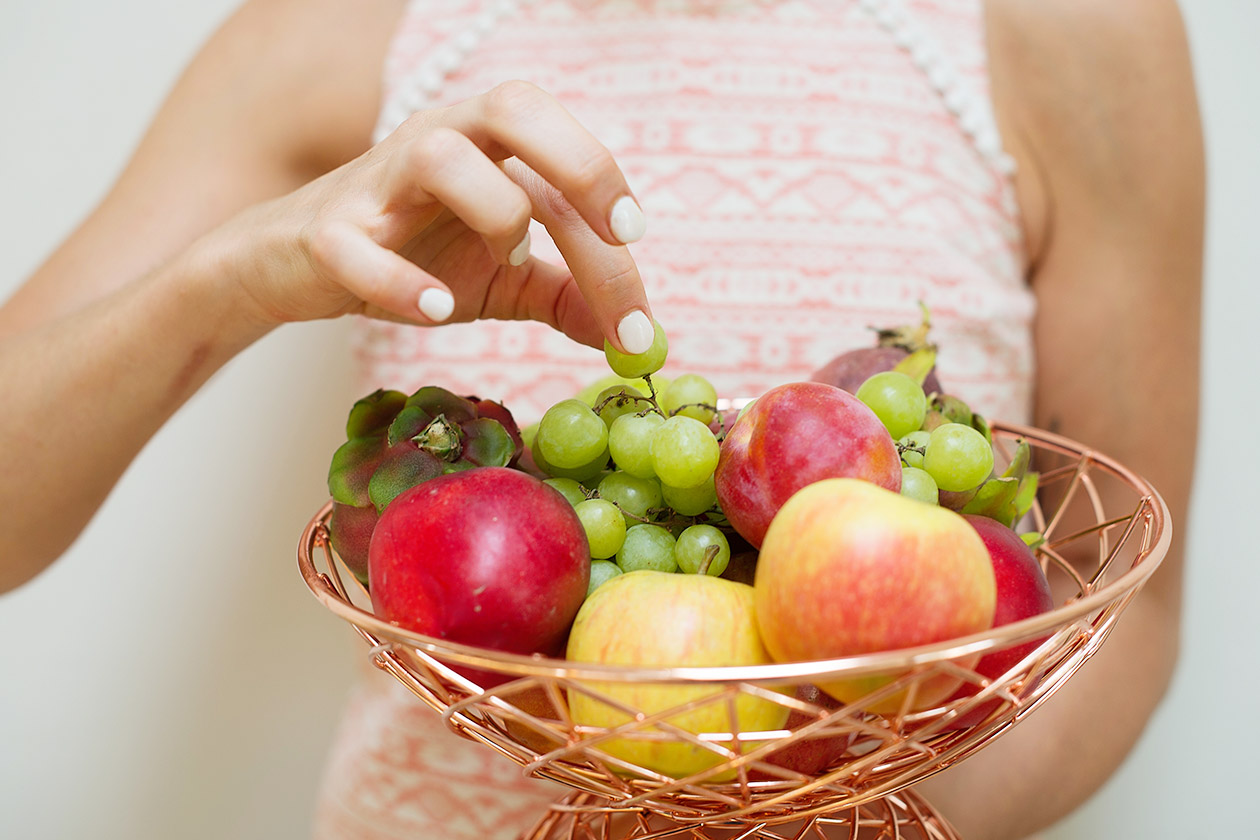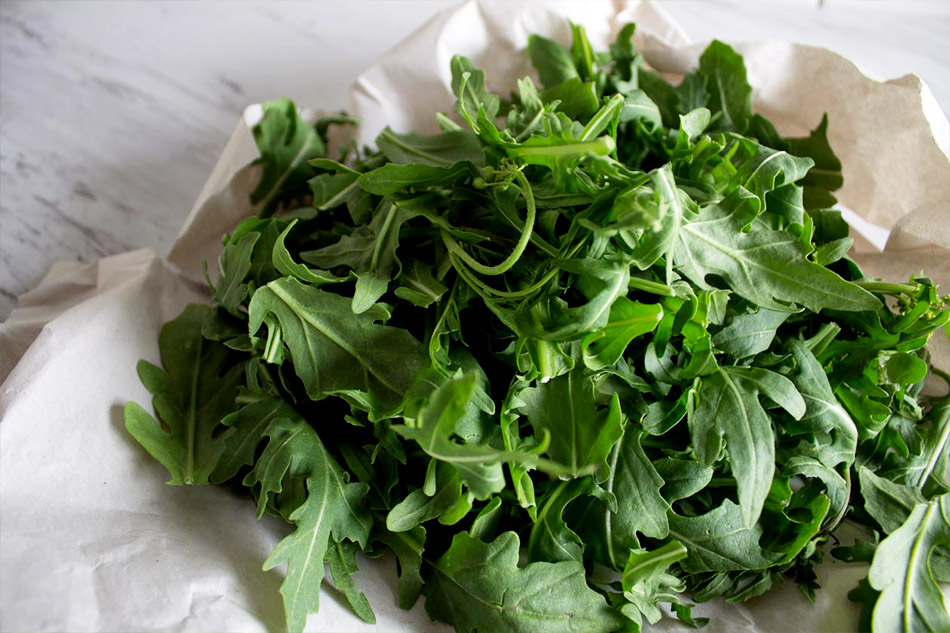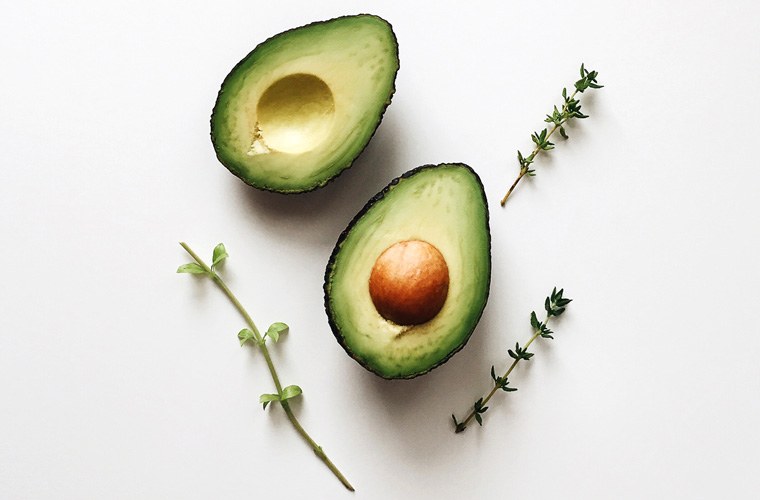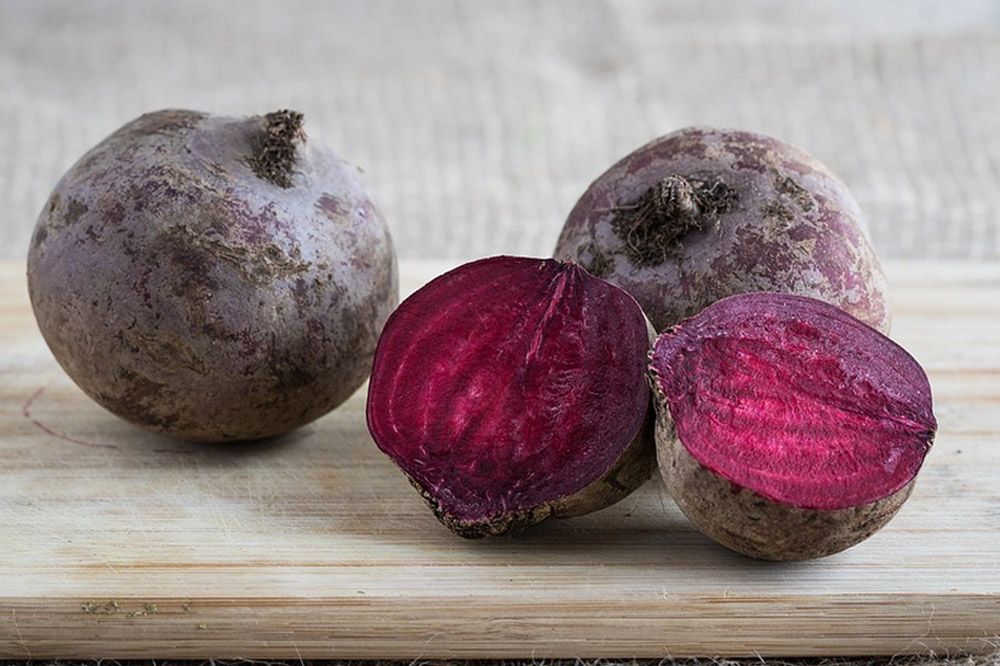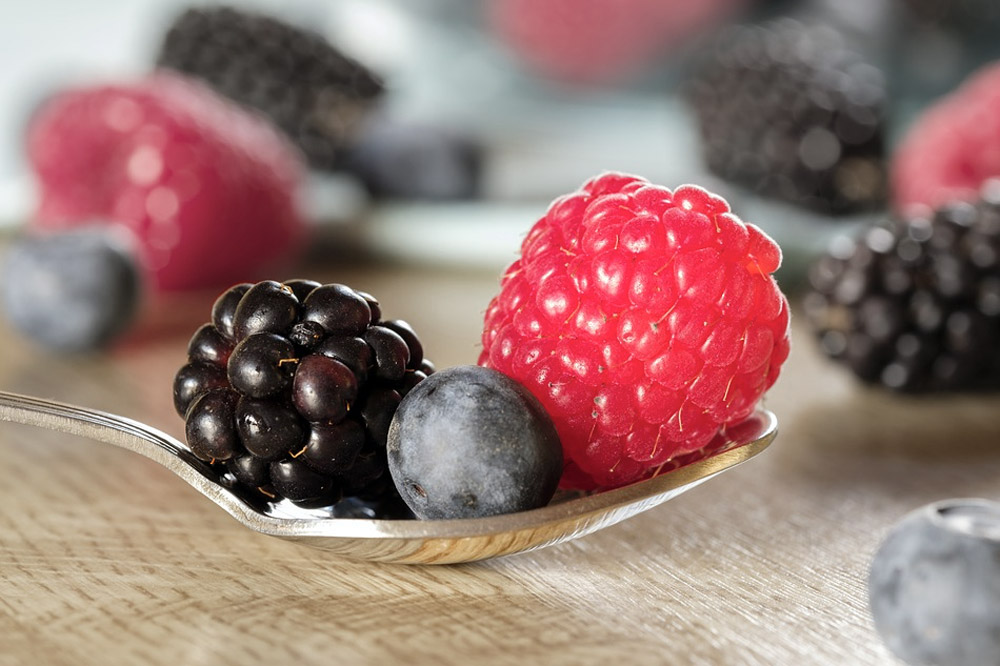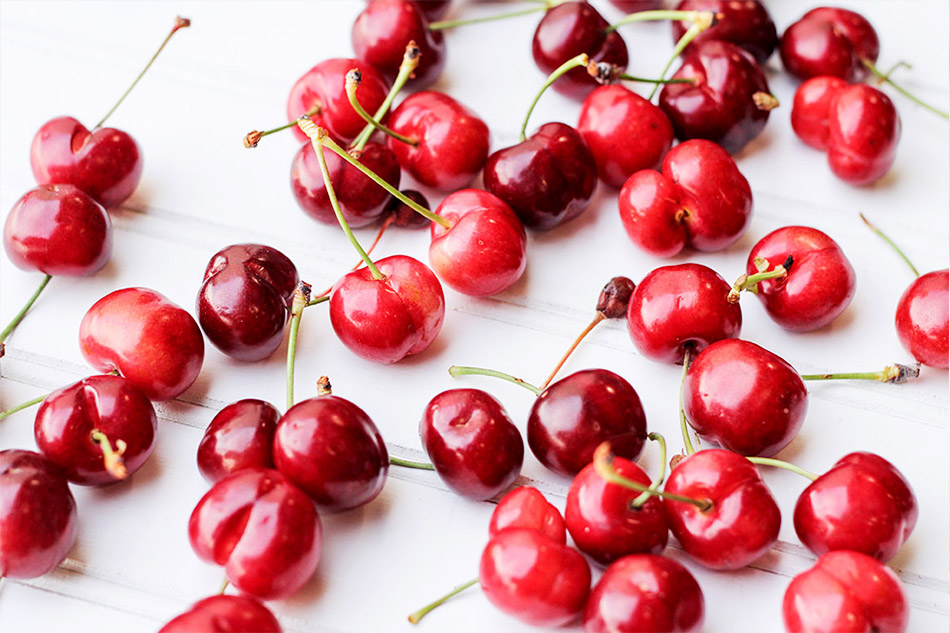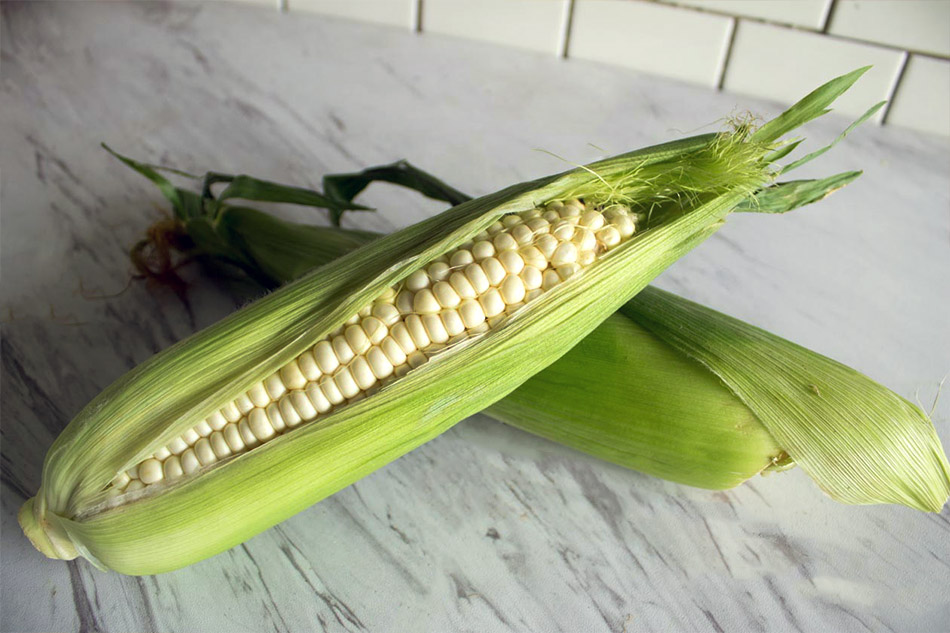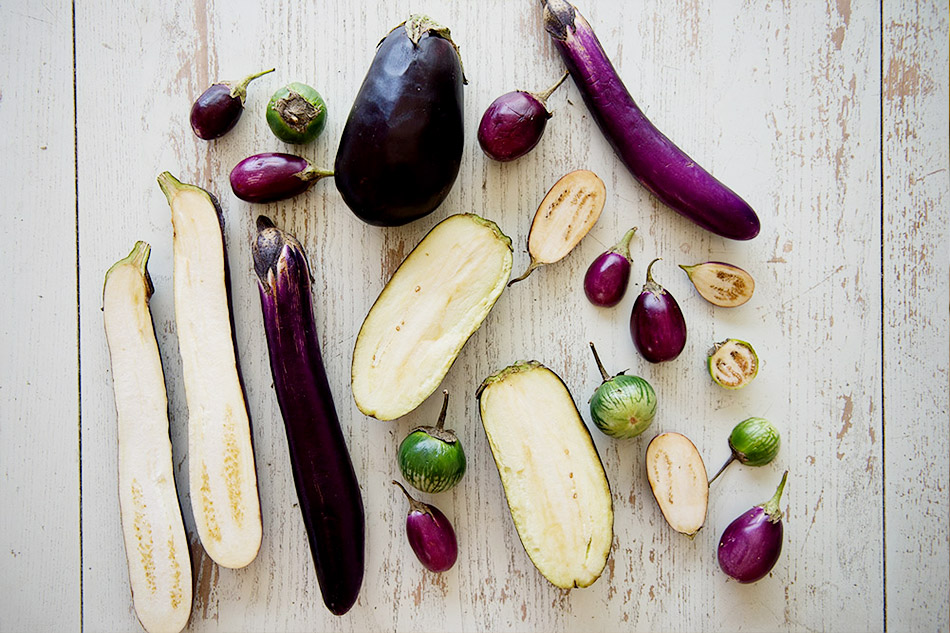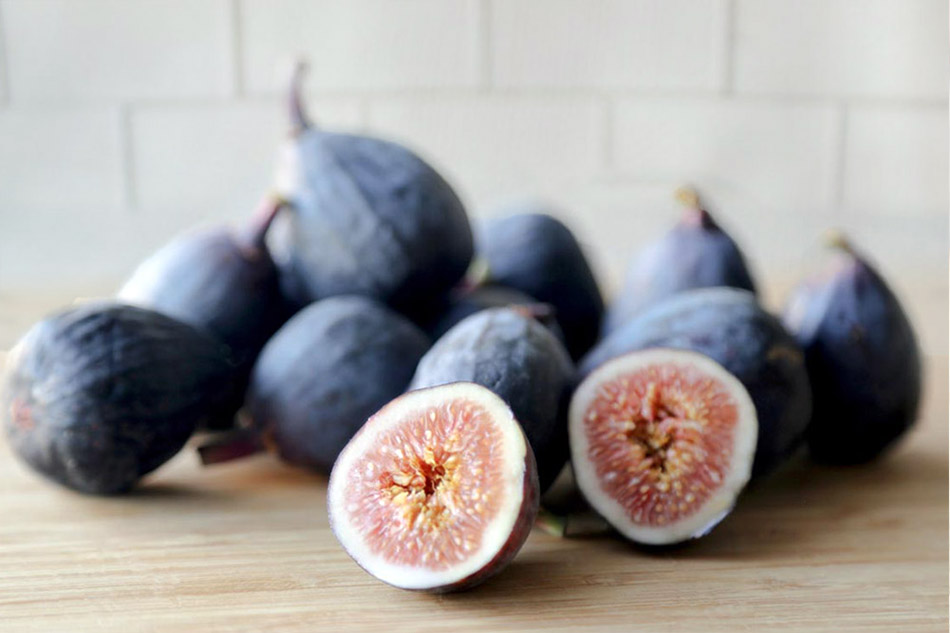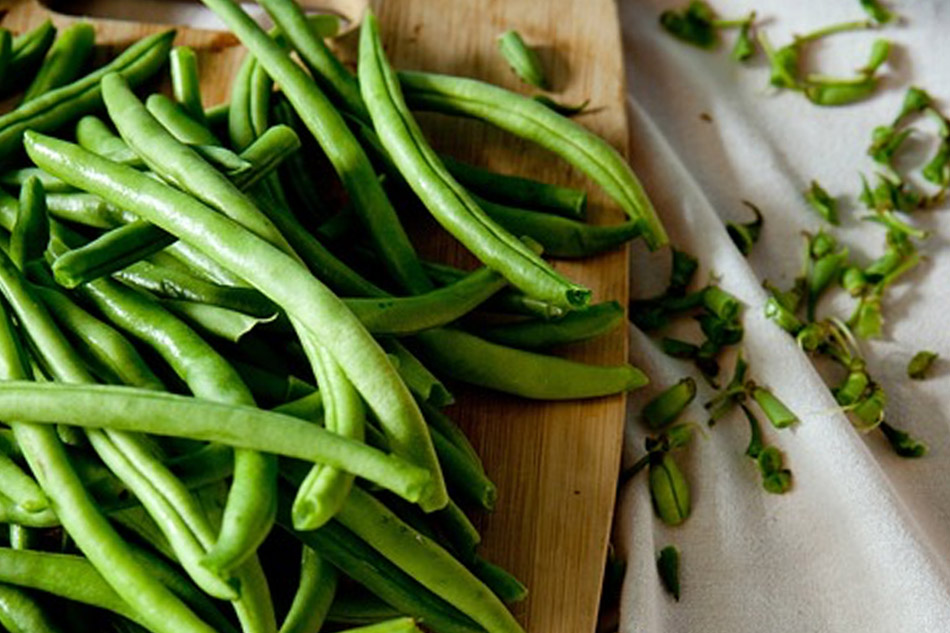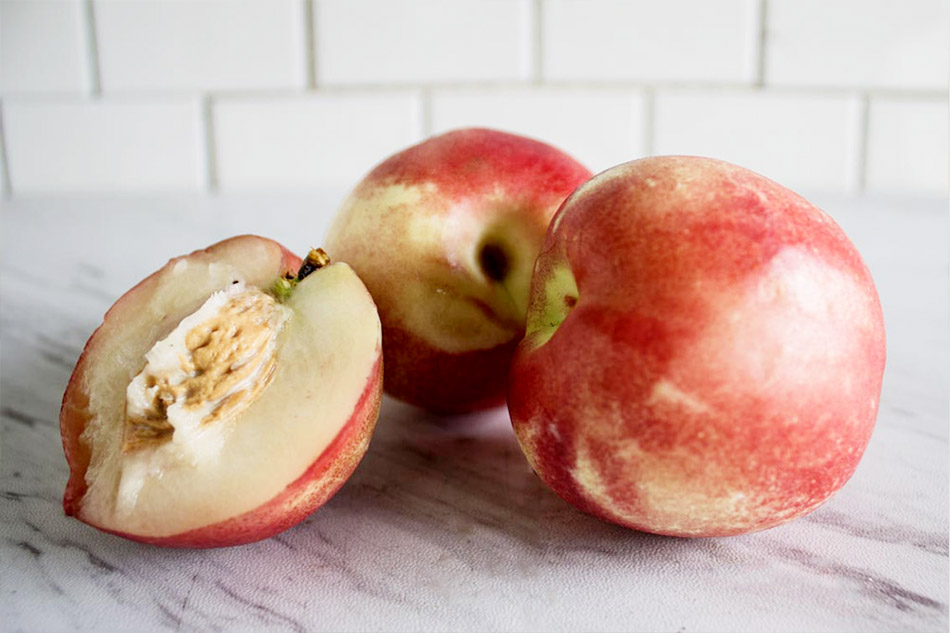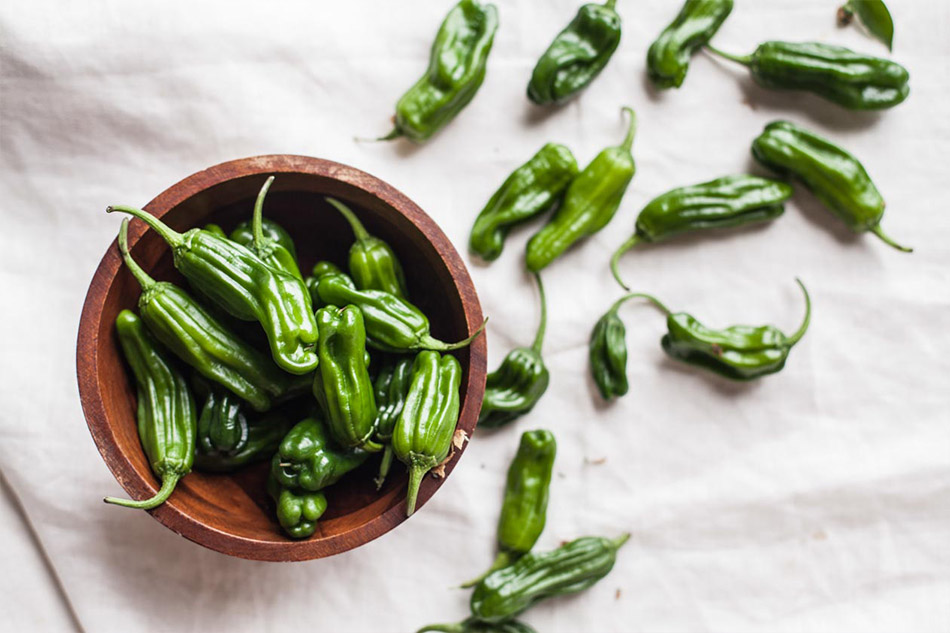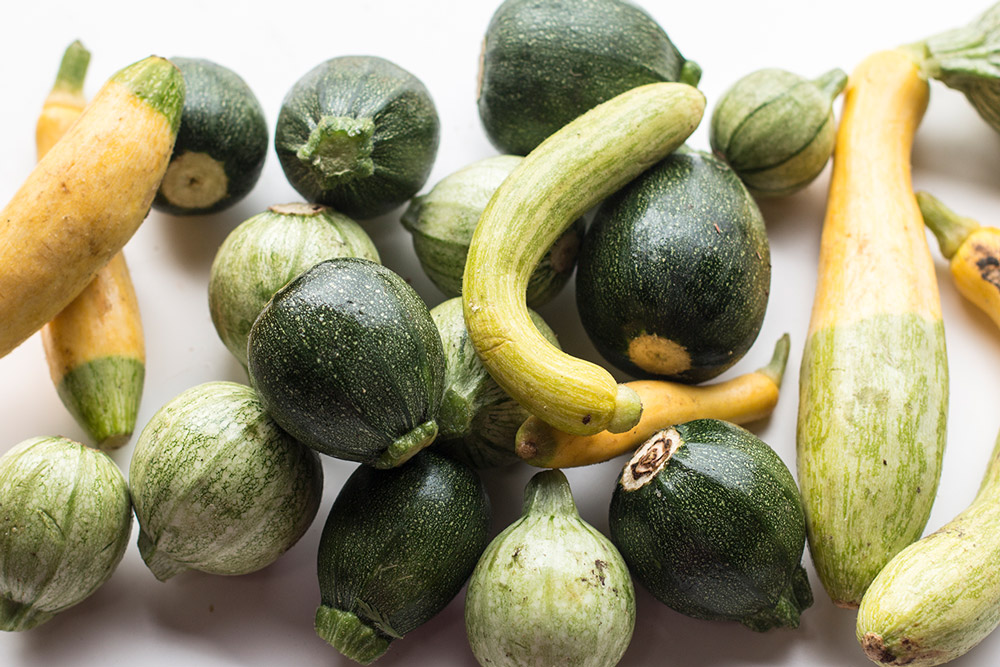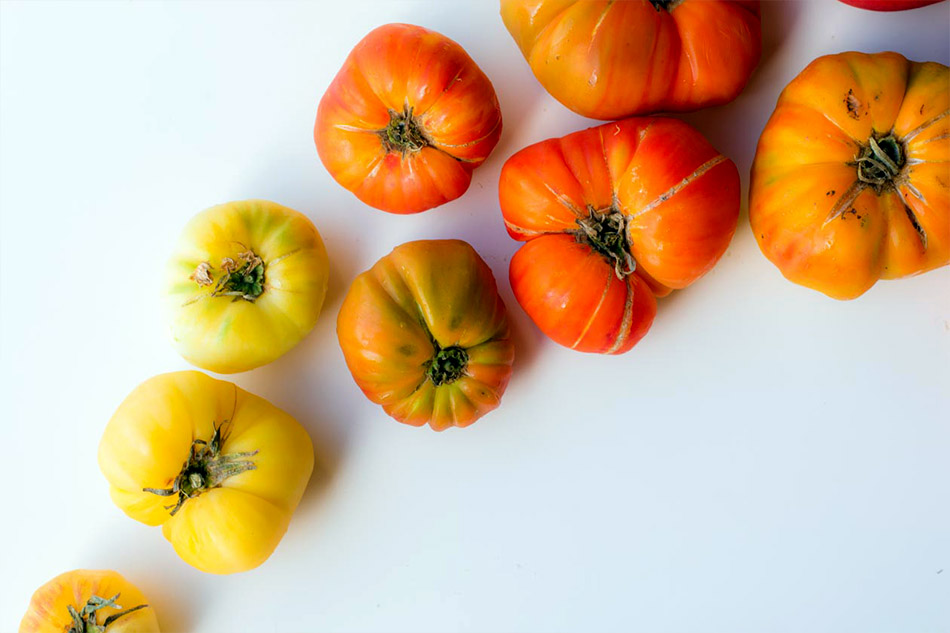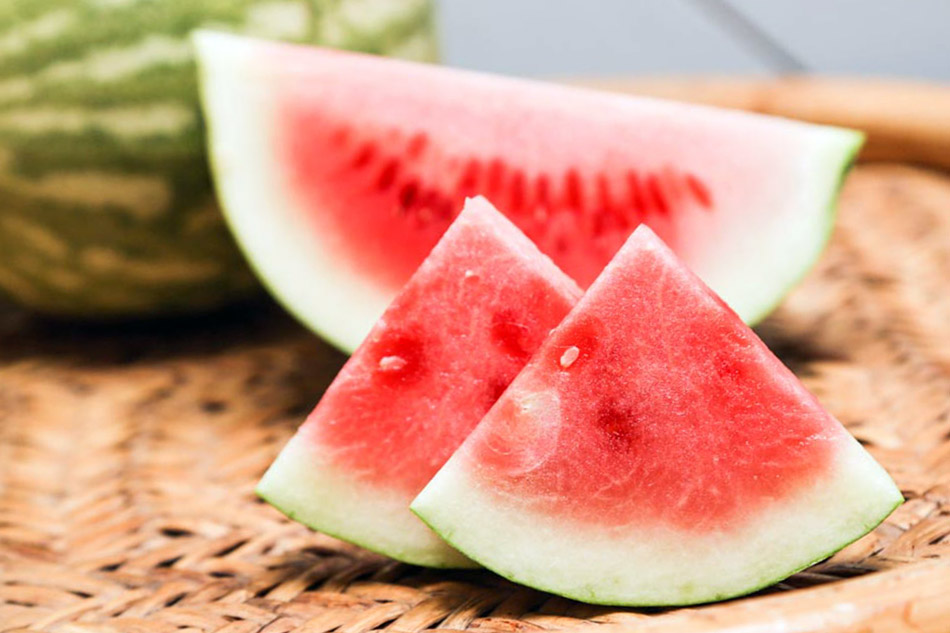Summer Produce Guide
[shareaholic app="share_buttons" id="27983777"]Summer is here, and with it, all our absolute favorite produce has returned to our tables. Use our Summer Produce Guide all season long to make the most of your gorgeous groceries.
ARUGULA
We’re rockin’ some rocket! Although some places may have it year-round, summer is when our favorite bright green peppery, nutty-tasting member of the mustard family really shines. A delicate delicacy going back hundreds of years to Italy, Morocco, Portugal, and Turkey, this versatile leafy green is perfect for pesto, or paired with parmesan as a pizza topping, or simply tossed into a salad with lemon and olive oil.
HOW TO STORE
Take a glass tupperware container and line it with a slightly moist paper towel. Add your unwashed arugula and seal with perforated plastic wrap. This will allow your arugula to breathe and stay crisp in your refrigerator for 4-6 days.
HOW TO PREPARE
Our arugula often comes to us wild straight from the farm and can tend to be full of dirt! t; When ready to use, toss arugula into a bowl of ice water, swishing leaves around to release any grime. Use a salad spinner to spin dry or let the leaves dry out on a clean kitchen towel for 20-30 minutes.
FUN FACTS
Did you know why we call it arugula and the Brits call it rocket? It’s actually simple. We call it arugula because of the heavy immigration to the United States from southern Italy where they call the leaf rucola. All those southern Italians on the East Coast tended to add a little “a” to the beginning of every word, so a-rucola became arugula. Meanwhile, northern Italians called the leaf ruchetta (pronounced roo-keht-uh), which the french transformed into roquette… and the English made it rocket!
AVOCADO
Do we really need to describe an avocado? Probably not. Chances are you know all about this little green wonder, and like most Californians, worship its creamy goodness. Whether they’re sweet, nutty, milky, or buttery, avocados are a SoCal staple that aren’t going anywhere. From toasts to tacos, and smoothies to salsas, avocados have a huge spot in our heart. But summer is the time to really celebrate our local lover the true Californian avocado. We’re so lucky that here in California we (especially from May-July) have access to amazingly sweet and creamy organic avocados from right here in San Diego!
HOW TO STORE
Store them at room temperature in your fruit bowl. To speed up ripening, place hard avocados in a paper bag with an apple, banana, or other fruit that releases ethylene gas. Once ripe, enjoy soon! Avocados don’t stay ripe long. But we’re guessing you wont have a hard time eating them.
HOW TO PREPARE
Cut avocados oxidize quickly once exposed to air turning them brown and mushy. Adding lemon or lime juice will help slow the process, but not by much, so do not cut until you are absolutely sure you’re going to use them. If you want to save part, cover all exposed areas tightly with plastic.
BEETS
Earthy and sweet, you can’t beat a beet. These ravishing roots really blossom in summer with a huge variety of colors to choose from; red, pink, orange, yellow, and white! Some are small and stripped, while some are as big as softballs! No matter which ones you get, they’re always great roasted and drizzled with olive oil and goat cheese or tossed into a salad.
HOW TO STORE
Cut the beetroots from their greens before storing in the crisper drawer of your fridge. Don’t rinse your beets until ready to cook.
HOW TO PREPARE
The best way to cook beets is a quick roast in the oven. Leave the skin on! They are nature’s way of helping you prevents the juices from bleeding out, and they easily slip right off after cooking. Once you begin to cut and remove skins, we recommend using gloves; beets do bleed.
BERRIES
Natural berries are not a year ‘round food. When you do see berries in winter, steer clear! Healthy, organic, non-GMO and all-natural berries have a brief but beautiful season from April to September that we dream about the rest of the year. Strawberries are first on the scene in spring (they appeared in our Spring Produce Guide); followed by blueberries, raspberries, blackberries, and mulberries across the summer months. Yes, berries can be baked into a variety of delicious items, but when these beautiful berries are truly at their peak, the real treat is just to eat them fresh out of the palm of your hand like the Mother Nature’s candy they are.
HOW TO STORE
Don’t wait to enjoy! Not all fruit is created equal. Winter fruits like apples and oranges are tougher, for good reason, and may last a whole week before even showing signs of fading. Summer fruits though, berries and stone fruits, are fleeting summer flings that you just have to enjoy in the moment. Try to eat within two days of delivery!
HOW TO PREPARE
Rinse berries in cold water and lightly pat dry with kitchen towels.
CHERRIES
Cherries are a delicious sign that stone fruit season is around the corner! Sweet and juicy, we look forward to their season, which begins in May or June. They thrive here in California where the weather is warm and we’re lucky to have them. They’re delicious baked into pies as well as cooked into sauces and preserves, but mostly we enjoy them raw, chopped into sweet salads or straight from the basket.
HOW TO STORE
Store cherries unwashed in a perforated plastic bag in the fridge.
HOW TO PREPARE
Leaving the pits in will intensify the cherry flavor in cooked dishes; however, for most uses you’ll want to pit them. You can use a cherry pitter, a pastry tip, or a clean, bent paper clip to remove the pits. Wear gloves so you don’t stain your hands.
CORN
Although considered an American staple and often associated in the States with the 4th of July, corn is actually an international crop! Grown on every continent (except Antarctica), many cultures around the world get their sustenance and all-natural energy from this unbelievable healthy starch. Skip the butter! Sweeter than it’s yellow commercial counterparts this all natural local corn is lusciously creamy.
HOW TO STORE
Store corn in an air-tight container or tightly wrapped plastic bag in the refrigerator if you do not intend to cook it on the day of delivery. Do not remove its husk since this will protect its flavor. Fresh corn freezes well if placed in heavy-duty freezer bags.
HOW TO PREPARE
Add to a pot of boiling water for ten minutes. Remove corn and season as desired. We love chile lime seasoning on our corn!
EGGPLANT
Everybody loves an eggplant! While we may be used to the big bulbous, deep purple variety, eggplants come in an impressive range of sizes, shapes, and colors! From the smaller Italian eggplants to slender Japanese, to tiny bite-sized eggplants, we love cooking with them all through the summer. Try them baked, sautéed, grilled or fried!
HOW TO STORE
Don’t put eggplants in your fridge! The cool moisture actually causes their delicate flesh to spoil. Instead keep eggplants in a cool, dry place like a pantry or cupboard out of the sunlight, (but not near onions and garlic) and use them within a day or two. Don’t rinse until ready to use.
HOW TO PREPARE
Eggplants are delicate and discolor and go ‘bad’ quickly. Rinse them, trim the cap, and cut into your desired size. Then add salt to each exposed side and let them sweat for 10-20 minutes. This process improves their texture and digestibility as well as helps to mask a little of their natural bitterness.
FIGS
These fresh ripe figs are truly mother nature’s candy. But with all that potassium, fiber and vitamin B, this is the healthiest “candy” you’ll ever have. These super-fruits help lower cholesterol, insulin, and prevent breast cancer. Best enjoyed the day of delivery! Decadently sweet with the most amazing rich colors and creamy texture, they deserve to be shown off. Their sweetness makes them a welcome addition to desserts, breakfast sweets, and baked goods! They pair beautifully with savory meats and cheeses. We love them with baked ricotta and prosciutto.
HOW TO STORE
It’s important to keep figs cold to slow deterioration. Use them immediately or store in the coldest part of your refrigerator for up to two days. Figs can be frozen whole, sliced or peeled in a sealed container for ten to twelve months.
HOW TO PREPARE
No need to peel! Fig skins are delicate and easy to digest. Just remove the tip and the base of the fig and slice into quarters to add to a salad or fruit and cheese plate. Or, try removing the tip and stuffing the fresh figs with ricotta before baking!
GREEN BEANS
Did you know green beans are actually fruit!? I know, right? Also called French Beans or String Beans, they are actually just the unripe fruit of a normal bean. But we won’t hold it against them, we love them as they are! With a wide variety of beans and peas in season from May until August, we’re excited to try them all in the coming months.
HOW TO STORE
Green beans will keep in the refrigerator for up to a week; store them in a paper bag or wrapped in a paper towel inside a perforated plastic bag.
HOW TO PREPARE
Wash the beans in cold water, pat dry, and snap off the stem end. Some varieties may have “strings” running down one side, which should be pulled off like a zipper before using.
STONE FRUIT
There’s no doubt that stone fruit season is our favorite time of year! From nectarines to cherries, apricots to peaches and plums there’s such a wide variety of colors and flavors to keep you happy all summer long. Called “stone fruits” due to their hard-as-stone seeds (or pits), each variety has its own micro-season of just a few weeks! So, if you see a stone fruit you like… make sure to enjoy them while they last.
HOW TO STORE
Don’t rinse until about to serve. Leave stone fruits out at room temperature for a day or two to ripen. Once ripe, store stone fruits in the refrigerator in the crisper drawer, uncovered and unwashed, for up to five days. However, during these hot Californian summers, if the weather outside is over 75º, go ahead and put them immediately in the fridge.
HOW TO PREPARE
Wash stone fruits in cold water before using. To pit the fruit, slice through the flesh along the seam and in a full circle around the stone; then twist in opposite directions to separate the halves. Remove the stone with a knife end.
CHILES & PEPPERS
Summer is the season of spice! From chiles to peppers, shishito to habañero, we’ve got lots of exciting options on the way. While they vary greatly in size, color, and heat, all chile peppers owe their signature fiery character to the chemical compound capsaicin, found in the seeds. Larger peppers tend to be milder, (the mildest of all being the bell pepper and poblano peppers) since proportionally they have fewer seeds and veins than smaller varieties. While the smaller habañero and jalapenño can be quite spicy. Whatever the potency, they add a welcome kick to everything from stews to sauces to drinks to desserts.
HOW TO STORE
Store them separately from other fruits and vegetables, as their oils and spicy flavor can transfer to other produce.
HOW TO PREPARE
It’s best to wear gloves when prepping chile peppers, as washing your hands won’t necessarily remove all the oils. If you want less heat, discard the pepper’s seeds and white ribs before using them.
SUMMER SQUASH
Zucchini may be the most famous, but summer squash come in all shapes, sizes, and colors. From crookneck and straightneck to globe squash, and pattypan are just as delicious. Summer squash’s sweet, buttery flesh can be eaten raw, but is extra tasty when roasted, grilled, steamed, pan-fried, or baked it into bread and cakes, and more. The blossoms of the summer squash plant are edible, too—they make a wonderfully delicate appetizer when stuffed with ricotta and lightly fried.
HOW TO STORE
Summer squash is quite perishable; store it in a perforated plastic bag in the crisper drawer for no more than four days. The blossoms should be eaten as soon as possible.
HOW TO PREPARE
Lightly scrub summer squash with a brush under cold water to remove any grit, then trim the base and neck.
TOMATOES
The sweetest sign of summer has to be the return of local tomatoes. While you may see them year ’round in some grocery stores, real organic Californian tomatoes arrive on the scene between June and September. Whether they’re Roma, San Marino, Beefsteak or Heirloom, you’ll be able to taste the difference between these and their commercial counterparts right away.
HOW TO STORE
Once ripened, tomatoes will last for two to three days. If necessary, tomatoes can be refrigerated for one week. Try to avoid refrigerating tomatoes whenever possible, because they lose below 55°F.
HOW TO PREPARE
The best way to enjoy them is drizzled with a little olive oil and lightly salted, to enjoy their natural sweetness.
WATERMELONS
I mean, nothing says summer like watermelon! Just in time for your sunshine soaked picnics and BBQs, watermelons are everyone’s favorite summer treat for hot days. Lucky for us, California grows a wide variety of shapes and colors to enjoy all season long.
HOW TO STORE
Store whole and cut watermelons in the refrigerator. wrap cut watermelon tightly in saran wrap before refrigerating.
HOW TO PREPARE
Slice the melon into quarters and cut away the rind before cutting the flesh as desired.
The entire fruit is edible: The seeds can be roasted and eaten as a snack, the rind can be pickled, the sweet flesh lends itself to sweet and savory preparations alike.


